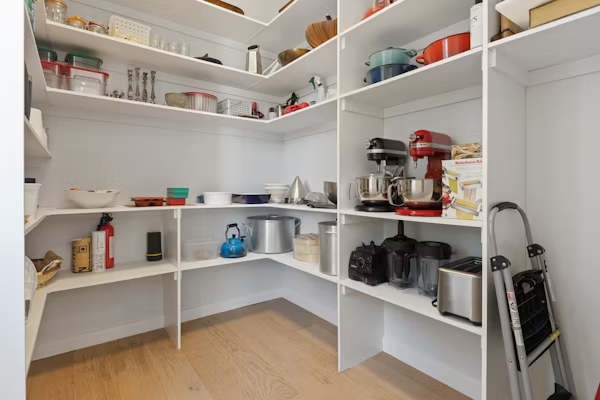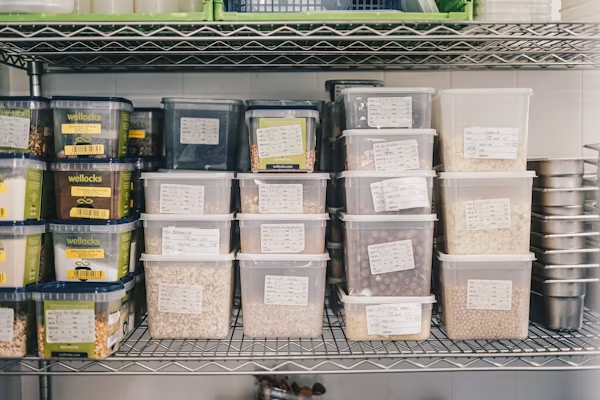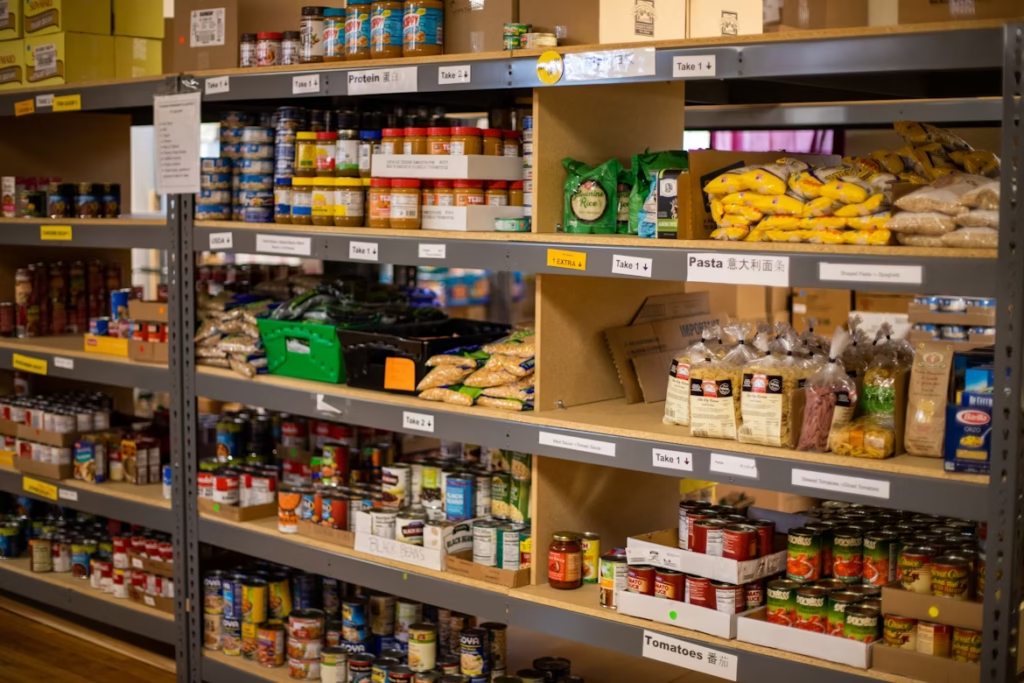Some of you reading this may have fond memories of visiting your grandparents and either making a beeline straight to their pantry to raid whatever goodies they had hidden inside, or would wait patiently while they would prepare meals while going back and forth to the larder to fetch ingredients. Well, attempting to recreate this feeling by building your very own pantry doesn’t just have to be about nostalgia.
A pantry has long been used by societies for storing food and kitchen-related items, serving as an auxiliary storage area for things like ingredients (mostly dry and non-perishable goods) and as a space to store kitchen equipment that you might not use as often as you’d like, but need every now and then. Unfortunately, many modern homes don’t come with pantries in0built as they used to, instead opting to eschew this space for more general cabinet space. While cabinets do serve plenty of valuable functions, there is something unique about a pantry that can really complete a kitchen.

Assess Your Needs and Plan the Space
Before you head out to your local Home Depot and die a little inside because of how much the cost of everything has increased, it pays to take a step back and assess why you need a pantry and to plan using the space available. Starting a project such as creating a new pantry isn’t as simple as knocking down a few existing cabinets and throwing up some lumber struts and nailing in the sides. It takes a more considered approach where you take in the various reasons surrounding the desire to build such a thing.
Evaluate Your Kitchen Layout
Your first step will be to measure up your kitchen space and figure out where a pantry would make the most sense. You don’t want it to be too far away or inaccessible, otherwise it kind of defeats the purpose (because you might end up never utilizing it effectively). But equally, it shouldn’t take up too much space, nor should it be the focal point of the kitchen. Having plenty of space to work with will make life easier, but if you’re like the rest of us and have a relatively diminutive space to work with, spending enough time at this stage will save you a lot of money from not wasting materials and ensure that you remain happily married!
Define Your Pantry Goals
Asking yourself why you actually want or need a pantry can also help to dictate where it will be located and how it will be laid out. If you are an avid cook, you may require enough space to store a vast library of herbs and spices that you have accumulated over time. You should also try to create space where you can store bulkier equipment without it being too inaccessible. Beware, though, this phase will likely take you a lot longer than you might anticipate at the outset.

Gather Materials and Tools
If you are the sort of person considering a project of this magnitude, you probably already have a decent set of tools. If not, then you have a choice to make. You can either invest in a range of power tools that you can keep and use for future undertakings, or bite the bullet and outsource the job to a pro. But if you’re reading this post, you probably want to do things yourself. When it comes to materials, you really have a lot of choice. Depending on your budget, you can opt for lower cost and lower quality, or the converse, where you spend a bit more but ensure the end product will really stand out and be something you’re proud of. As always, it’s up to you, but the more you can invest, the better it will ultimately look.
| Material | Pros | Cons | Best suited for |
| Plywood | AffordableEasy to cut and shapeStudy enough | Prone to warpingCan look cheapNot particularly long-lasting | Those on a budget and/ or need to whip something up post haste. |
| MDF | Smooth finishPaintable surfacesAffordable (relative to other opinions) | HeavyAbsorbs moistureIt can be tricky to work with if you don’t know what you’re doing | Similar to plywood, MDF is a good option if you’re on a budget. It’s also much easier to paint and create an aesthetic that matches your current kitchen design. |
| Metal shelving | LightweightAdjustableRobustEasy to access items | CostlyNot really a pantry in the traditional senseIt can look good, but probably won’tIngreadeints exposed to the elements (not great if you need a cool, dry space to store things) | Metal shelving can be a great option if you aren’t entirely sure about building something from scratch. They are also great in terms of easy access and ability to grab what you need and get cooking. |
| Solid wood | DurableLooks amazing | ExpsneiveRequires a lot more finesse than ply or MDFNeeds skill to cut and finish | If you’re after a high-end, custom design, real wood is where it’s at. While the cost is undoubtedly higher, the end result will be worth every penny. |

Organize And Stock Efficiently
We are skipping the actual build part here because you can find so many amazing videos and guides online that we can’t really do it justice. But the thing about building a pantry is that you will need to come up with a system that ensures you can access everything stored inside, and is easy to rotate stock and clean.
- Categorize by zone: Creating dedicated sections for the many different items will make your life easier and ensure that whenever you open your new pantry, a massive smile will sneak onto your face!
- Use clear containers and labeling: Using containers means that everything remains neat and efficient. Clear labels can also assist with stock rotation and knowing what’s inside each container.
- Maximise vertical space: It’s easy to fall into the trap of piling everything up on the floor. But if you built your pantry with a proper shelving system, using it will keep you sane and ensure that no ingredients are forgotten until they develop a smell and you need to deep clean the space.
- Rotate stock using the FIFO method: Always place new items behind older ones (First In, First Out) to ensure nothing expires unnoticed; check dates monthly to pull and use items nearing their end.
A pantry isn’t just a neat idea that your grandparents made use of; it serves a real purpose to increase efficiency in your kitchen and save money. While this post is anything but conclusive, it should give you an idea of where to begin and help you develop a desirable outcome that you will use for years.

































